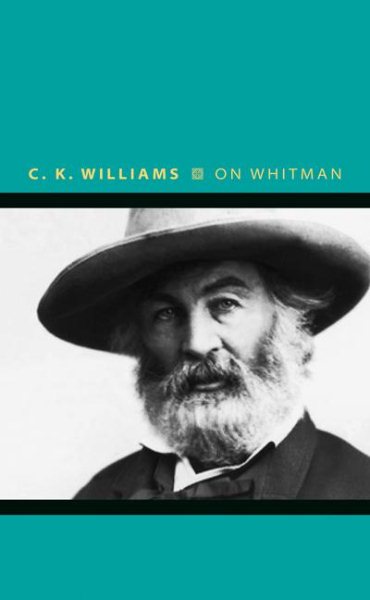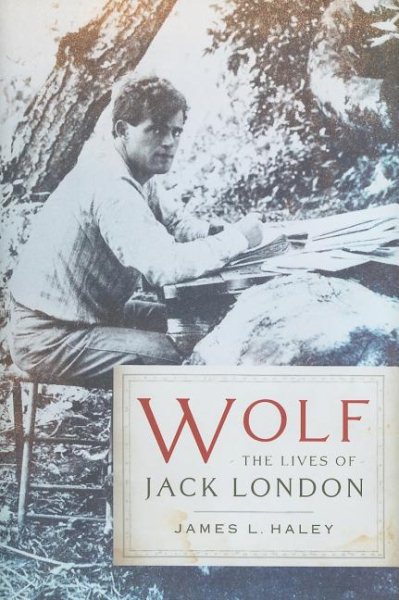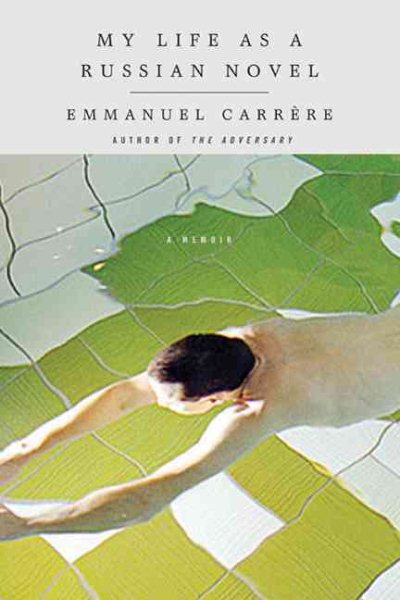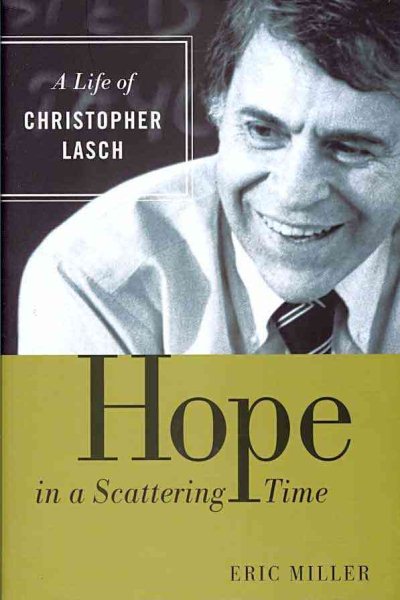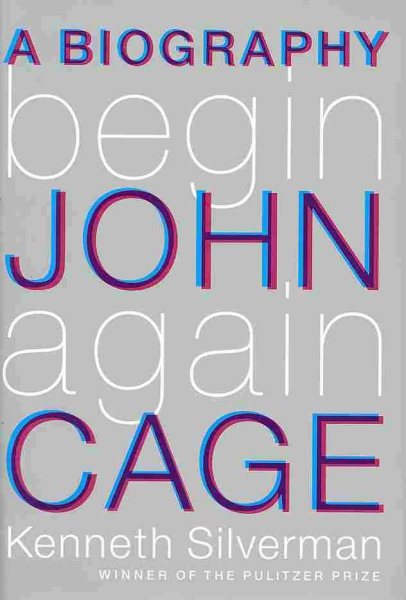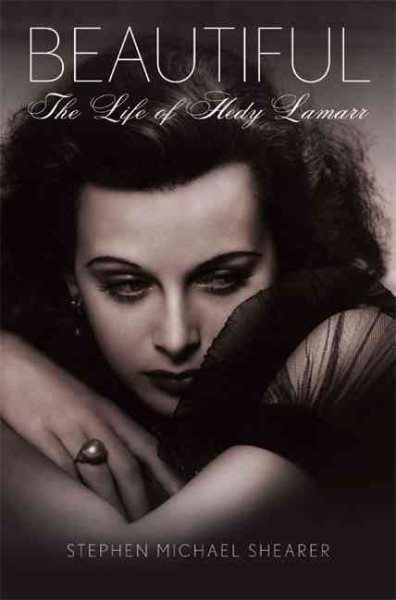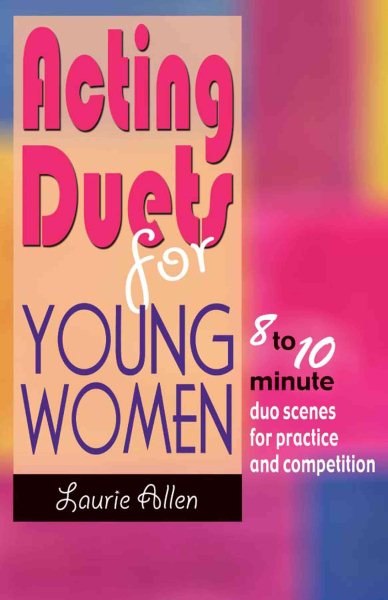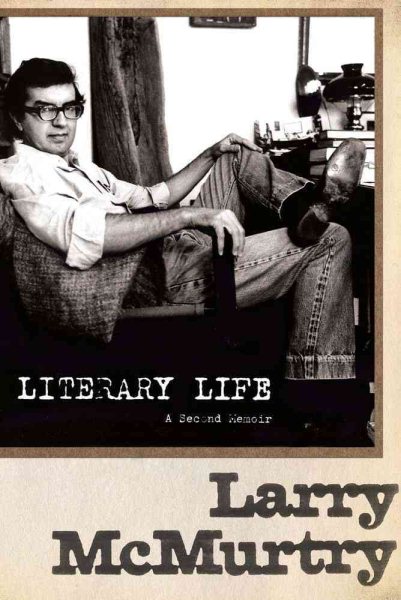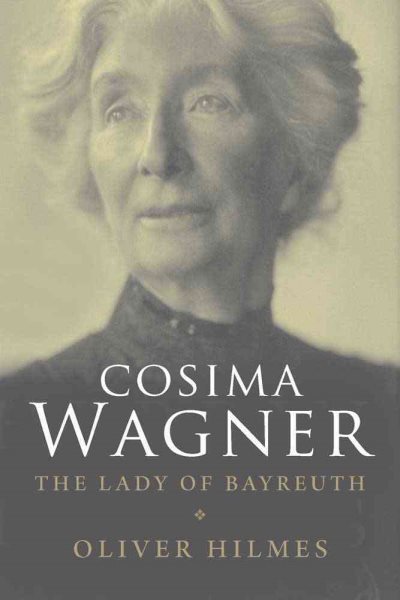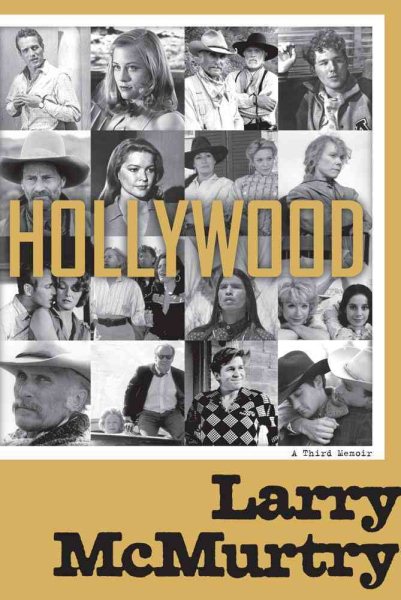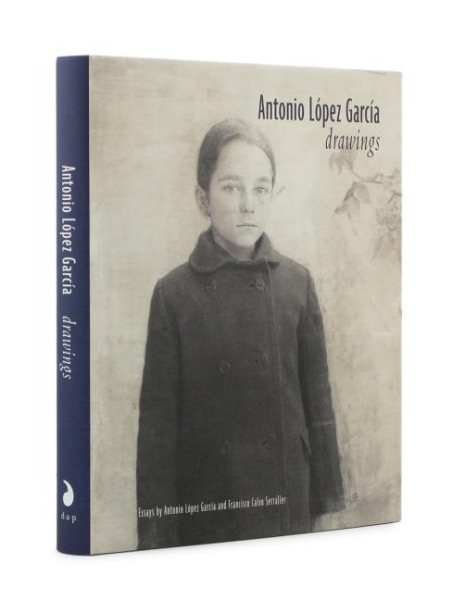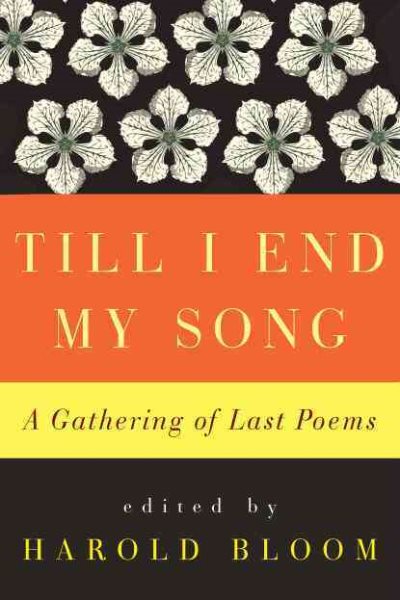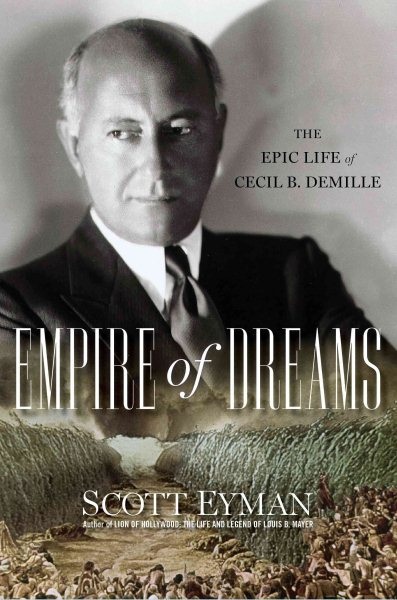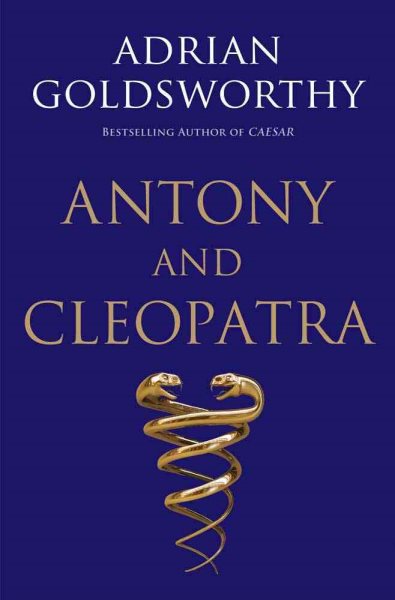By Charles Kenneth Williams
This jewel of a book, by one poet on another in the Writers on Writers series, does nothing less than show that Walt Whitman is the very unconscious and Paraclete of all American poets working today. With generous quotes from Williams's hero, we see how Whitman's oracular largesse most certainly extended to the continental-inspired Pound and Eliot. Williams returns to the pure, original edition (out of nine) of Leaves of Grass for inspiration, finding the so-called deathbed edition along with all the Leaves in between lacking the first flush of musical and formal elements. Williams likewise always returns to Leaves to explore what inspires: beyond Dante, Shakespeare, and others who attract him. In "Song of Myself," the "I" and "you," author and experiencer, are conflated to the point where the writer is one more of his own readers; "Song of Myself" tellingly ends with the word "you." As Williams observes, Whitman "wants us not to be afraid of ourselves, even of our dark, darkest, most doubting selves." As a personal introduction to the visionary free-verse wellspring of the American poetic spirit, this book is one that no poetry lover should miss.
Check Catalog
Arts!
A selection of our new and noteworthy materials on the Performing Arts as well as other Fine Arts
Saturday, October 30, 2010
Hi-De-Ho: The Life of Cab Calloway
By Alyn Shipton
Jazz critic Shipton follows his biography of Dizzy Gillespie (Groovin' High) and his extensive A New History of Jazz with the first full-length biography of the iconic originator of "Minnie the Moocher." At the height of his popularity in the Thirties, vocalist-bandleader Cab Calloway was the most popular and most highly compensated African American entertainer in the country. His scat vocals influenced American music from Louis Jordan to Tupac Shakur, and his stage costumes defined fashion for a generation of hipsters around the world. Shipton presents in admirable detail Calloway's professional apex as Cotton Club headliner and leader of the foremost big band in the United States and reveals him as a superior artistic tactician. He also offers critical reconsiderations of Calloway's vocal and instrumental recordings, making a strong case for his inclusion as a musical innovator in the class of Louis Armstrong or Duke Ellington.
Check Catalog
Jazz critic Shipton follows his biography of Dizzy Gillespie (Groovin' High) and his extensive A New History of Jazz with the first full-length biography of the iconic originator of "Minnie the Moocher." At the height of his popularity in the Thirties, vocalist-bandleader Cab Calloway was the most popular and most highly compensated African American entertainer in the country. His scat vocals influenced American music from Louis Jordan to Tupac Shakur, and his stage costumes defined fashion for a generation of hipsters around the world. Shipton presents in admirable detail Calloway's professional apex as Cotton Club headliner and leader of the foremost big band in the United States and reveals him as a superior artistic tactician. He also offers critical reconsiderations of Calloway's vocal and instrumental recordings, making a strong case for his inclusion as a musical innovator in the class of Louis Armstrong or Duke Ellington.
Check Catalog
Wolf: The Lives of Jack London
By James L. Haley
"I have drifted all my life, curiosity, that burning desire to know." In the intensely curious drifter who penned these words, Haley recognizes one of the most unlikely yet compelling novelists of the twentieth century. Lacing his biographical narrative with acute insights, Haley recounts how the flame of curiosity was first kindled in the son of an impoverished spiritualist medium, particularly chronicling the young Jack London's voracious boyhood reading of Melville, Kipling, and Flaubert. But only after his restless curiosity has schooled him in the harsh world outside of books: the world of panhandling, oyster-pirating, and prospecting, does London find his vocation in distilling the brutalities of life into the epiphanies of art. Careful research illuminates the creative process through which London forged such powerful works as Call of the Wild, White Fang, and The Game. But alongside London's curiosity-driven imaginative artistry, Haley traces a parallel strain of conviction-fired social activism, evident in works such as War of the Classes. Not all readers will share Haley's admiration for an idealist intent on revolutionizing society, while himself keeping a valet and habitually mistreating his wife. But any reader who shares even a spark of London's incandescent curiosity will relish this vivid portrait.
Check Catalog
"I have drifted all my life, curiosity, that burning desire to know." In the intensely curious drifter who penned these words, Haley recognizes one of the most unlikely yet compelling novelists of the twentieth century. Lacing his biographical narrative with acute insights, Haley recounts how the flame of curiosity was first kindled in the son of an impoverished spiritualist medium, particularly chronicling the young Jack London's voracious boyhood reading of Melville, Kipling, and Flaubert. But only after his restless curiosity has schooled him in the harsh world outside of books: the world of panhandling, oyster-pirating, and prospecting, does London find his vocation in distilling the brutalities of life into the epiphanies of art. Careful research illuminates the creative process through which London forged such powerful works as Call of the Wild, White Fang, and The Game. But alongside London's curiosity-driven imaginative artistry, Haley traces a parallel strain of conviction-fired social activism, evident in works such as War of the Classes. Not all readers will share Haley's admiration for an idealist intent on revolutionizing society, while himself keeping a valet and habitually mistreating his wife. But any reader who shares even a spark of London's incandescent curiosity will relish this vivid portrait.
Check Catalog
My Life As a Russian Novel: A Memoir
By Emmanuel Carrere
French novelist/screenwriter/journalist Carrère (I Am Alive and You Are Dead: A Journey Inside the Mind of Philip K. Dick, 2003, etc.) recalls two fraught years that took him to Siberia and ended a love affair.
Heavy drinking, infidelity, questions about meaning and identity, white nights in the long northern summer—it's a Russian novel in subject matter, but the author's approach is decidedly French: minute analysis of each emotional up or down, brutal frankness about his (and others') less-than-admirable behavior that recalls Flaubert or Stendhal. In 2000, Carrère traveled with a film crew to the provincial town of Kotelnich for a news story that later turned into an open-ended project for the French National Film Commission. Since he had no real plan for the project, he mostly hung around aimlessly with the locals—experiences that are sharply described in the memoir's least solipsistic scenes—while obsessing over two loose ends in his life. The first was the fate of his grandfather, a Russian immigrant to France who disappeared in 1944, presumably killed in reprisal for collaborating with the Germans. Carrère's mother, a distinguished French intellectual, begged her son not to write about her shameful father. Believing that she "denied us the right to our suffering," he did it anyway. This would be less distasteful if the author's motives didn't seem to be entirely selfish, which is the impression also created by his account of his tortured relationship with Sophie, the second loose end. The couple had great sex, but everything Carrère writes—including a semi-pornographic story he published in Le Monde, instructing his lover to read it on a train ride and follow its instructions—backs up Sophie's anguished belief that he was uninterested in her job, her friends and her life, embarrassed by her lower social status and intent on controlling her every move. She had an affair, became pregnant and eventually married another man. Readers will most likely conclude that Carrère deserved Sophie's payback.
Check Catalog
French novelist/screenwriter/journalist Carrère (I Am Alive and You Are Dead: A Journey Inside the Mind of Philip K. Dick, 2003, etc.) recalls two fraught years that took him to Siberia and ended a love affair.
Heavy drinking, infidelity, questions about meaning and identity, white nights in the long northern summer—it's a Russian novel in subject matter, but the author's approach is decidedly French: minute analysis of each emotional up or down, brutal frankness about his (and others') less-than-admirable behavior that recalls Flaubert or Stendhal. In 2000, Carrère traveled with a film crew to the provincial town of Kotelnich for a news story that later turned into an open-ended project for the French National Film Commission. Since he had no real plan for the project, he mostly hung around aimlessly with the locals—experiences that are sharply described in the memoir's least solipsistic scenes—while obsessing over two loose ends in his life. The first was the fate of his grandfather, a Russian immigrant to France who disappeared in 1944, presumably killed in reprisal for collaborating with the Germans. Carrère's mother, a distinguished French intellectual, begged her son not to write about her shameful father. Believing that she "denied us the right to our suffering," he did it anyway. This would be less distasteful if the author's motives didn't seem to be entirely selfish, which is the impression also created by his account of his tortured relationship with Sophie, the second loose end. The couple had great sex, but everything Carrère writes—including a semi-pornographic story he published in Le Monde, instructing his lover to read it on a train ride and follow its instructions—backs up Sophie's anguished belief that he was uninterested in her job, her friends and her life, embarrassed by her lower social status and intent on controlling her every move. She had an affair, became pregnant and eventually married another man. Readers will most likely conclude that Carrère deserved Sophie's payback.
Check Catalog
Hope in a Scattering Time: A Life of Christopher Lasch
By Eric Miller
An intellectual biography is rare on book shelves today. You find memoirs of Chelsea Handler and quickly written pop biographies of whoever is president at the time. Every once in a while, you come across an intellectual biography. It is not written like your "normal" biography; instead it is a biography of ideas, more specifically the ideas of the person whom the author is writing about. That is what Eric Miller has done for the social critic and historian Christopher Lasch. Miller is less concerned with the daily life of Christopher Lasch; instead he explores the ideas and works of Lasch. From his groundbreaking Narcissism to his final magnum opus Revolt of the Elites, we get an in-depth and close-up view of this monumental thinker. Shunned by the left, and embraced by the right (whom he ignored), he was a lonely scholar using history as a guide to critique modern America. This is a wonderfully written biography, and one that is not for the faint of heart. Many people might get lost in the authors argument; but it is well worth the read.
Check Catalog
An intellectual biography is rare on book shelves today. You find memoirs of Chelsea Handler and quickly written pop biographies of whoever is president at the time. Every once in a while, you come across an intellectual biography. It is not written like your "normal" biography; instead it is a biography of ideas, more specifically the ideas of the person whom the author is writing about. That is what Eric Miller has done for the social critic and historian Christopher Lasch. Miller is less concerned with the daily life of Christopher Lasch; instead he explores the ideas and works of Lasch. From his groundbreaking Narcissism to his final magnum opus Revolt of the Elites, we get an in-depth and close-up view of this monumental thinker. Shunned by the left, and embraced by the right (whom he ignored), he was a lonely scholar using history as a guide to critique modern America. This is a wonderfully written biography, and one that is not for the faint of heart. Many people might get lost in the authors argument; but it is well worth the read.
Check Catalog
Begin Again: A Biography of John Cage
By Kenneth Silverman
| ||||||
| Check Catalog |
Beautiful: The Life of Hedy Lamarr
By Stephen Michael Shearer
Shearer's biography does not simply chronicle the life of Hollywood legend Hedy Lamarr, from her cosseted childhood in an assimilated Jewish family in Austria to her early breaks in Max Reinhardt's internationally famous theater company; her scandalous, career-launching nude scene in the Czech film Ecstasy; her tortured first marriage to Jewish Nazi arms manufacturer Friedrich Mandl (dubbed an "honorary Aryan" by the Third Reich); and her daring escape from the sadistic Mandl and Nazi Germany to Los Angeles and MGM. The real beauty of the book is how well and how wholeheartedly Shearer tells this remarkable story. It helps that much of Lamarr's life reads like a novel, packed with surprise twists and stereotype-destroying details, such as Lamarr's fascinating after-hours research in military communications systems (done with avant-garde composer George Antheil), research that formed the foundation for the technology used in Wi-Fi and cell phones. For this she won an award in 1997, three years before her death, from the Electronic Frontier Foundation. One finishes the book feeling that one has read a complete portrait of Hedy Lamarr, actor and inventor, a biography that reveals, with drama and wit, how much more there was to this complex, brilliant woman than her ethereal natural beauty."
Check Catalog
Shearer's biography does not simply chronicle the life of Hollywood legend Hedy Lamarr, from her cosseted childhood in an assimilated Jewish family in Austria to her early breaks in Max Reinhardt's internationally famous theater company; her scandalous, career-launching nude scene in the Czech film Ecstasy; her tortured first marriage to Jewish Nazi arms manufacturer Friedrich Mandl (dubbed an "honorary Aryan" by the Third Reich); and her daring escape from the sadistic Mandl and Nazi Germany to Los Angeles and MGM. The real beauty of the book is how well and how wholeheartedly Shearer tells this remarkable story. It helps that much of Lamarr's life reads like a novel, packed with surprise twists and stereotype-destroying details, such as Lamarr's fascinating after-hours research in military communications systems (done with avant-garde composer George Antheil), research that formed the foundation for the technology used in Wi-Fi and cell phones. For this she won an award in 1997, three years before her death, from the Electronic Frontier Foundation. One finishes the book feeling that one has read a complete portrait of Hedy Lamarr, actor and inventor, a biography that reveals, with drama and wit, how much more there was to this complex, brilliant woman than her ethereal natural beauty."
Check Catalog
Acting Duets for Young Women: 8 to 10 Minute Duo Scenes for Practice and Competition
By Laurie Allen
Includes both comedic and dramatic skits designed for two female actors, with comedic scenes including "Online Love," "Dirty Laundry" and "Marriage Phobia" and dramatic scenes including "The Wishing Well," "Night Storm" and "The Red Dress."
Check Catalog
Includes both comedic and dramatic skits designed for two female actors, with comedic scenes including "Online Love," "Dirty Laundry" and "Marriage Phobia" and dramatic scenes including "The Wishing Well," "Night Storm" and "The Red Dress."
Check Catalog
Monday, October 25, 2010
Literary Life: A Second Memoir
By Larry McMurtry
McMurtry is best known as a Pulitzer Prize-winning novelist, but he is also a fine memoirist. Here, in his follow-up to the acclaimed Books (2008), McMurtry continues to chronicle his lifelong love affair with the printed word, which includes his own disappointments and triumphs as a writer. He grew up on a ranch outside Archer City, Texas, where he learned to love reading but showed no particular skill or interest in writing as a career. He stumbled badly as an undergraduate at Rice but seemed to find himself and his writing voice as he earned a BA from North Texas State and then returned to Rice to earn an MA. McMurtry offers wonderful and often surprising insights into the process of creative writing; for example, he asserts that writing a novel is far easier than writing a short story. Once McMurtry entered the fray as a professional writer, his reactions to his advancement and praise may seem bizarre, even to him. He also provides interesting views concerning the work of fellow writers, including Jack Kerouac and Ken Kesey. This is an enjoyable and revealing look at the thoughts and career of a great writer.
Check Catalog
McMurtry is best known as a Pulitzer Prize-winning novelist, but he is also a fine memoirist. Here, in his follow-up to the acclaimed Books (2008), McMurtry continues to chronicle his lifelong love affair with the printed word, which includes his own disappointments and triumphs as a writer. He grew up on a ranch outside Archer City, Texas, where he learned to love reading but showed no particular skill or interest in writing as a career. He stumbled badly as an undergraduate at Rice but seemed to find himself and his writing voice as he earned a BA from North Texas State and then returned to Rice to earn an MA. McMurtry offers wonderful and often surprising insights into the process of creative writing; for example, he asserts that writing a novel is far easier than writing a short story. Once McMurtry entered the fray as a professional writer, his reactions to his advancement and praise may seem bizarre, even to him. He also provides interesting views concerning the work of fellow writers, including Jack Kerouac and Ken Kesey. This is an enjoyable and revealing look at the thoughts and career of a great writer.
Check Catalog
Cosima Wagner: The Lady of Bayreuth
By Oliver Hilmes
In this meticulously researched book, Oliver Hilmes paints a fascinating and revealing picture of the extraordinary Cosima Wagner—illegitimate daughter of Franz Liszt, wife of the conductor Hans von Bülow, then mistress and subsequently wife of Richard Wagner. After Wagner’s death in 1883 Cosima played a crucial role in the promulgation and politicization of his works, assuming control of the Bayreuth Festival and transforming it into a shrine to German nationalism. The High Priestess of the Wagnerian cult, Cosima lived on for almost fifty years, crafting the image of Richard Wagner through her organizational ability and ideological tenacity.
The first book to make use of the available documentation at Bayreuth, this biography explores the achievements of this remarkable and obsessive woman while illuminating a still-hidden chapter of European cultural history.
Philip Roth: Novels, 1993-1995 - Operation Shylock, Sabbath's Theater
By Philip Roth
Roth has the distinction of being the only living writer included in the venerable Library of America series. This sixth installment of his collected works features two novels: 1993's Operation Shylock and 1995's Sabbath's Theater. Shylock is most unusual in that Roth uses himself as both the antagonist and the protagonist: a man impersonating Roth is touring Israel, and the real Roth goes after him. The comic Sabbath's Theater is more straightforward. This double edition is being released to coincide with the publication of his forthcoming novel, NEMESIS. Your hardcovers should be shot by now, so replace them with this single volume and save a couple of fazools.
Check Catalog
Roth has the distinction of being the only living writer included in the venerable Library of America series. This sixth installment of his collected works features two novels: 1993's Operation Shylock and 1995's Sabbath's Theater. Shylock is most unusual in that Roth uses himself as both the antagonist and the protagonist: a man impersonating Roth is touring Israel, and the real Roth goes after him. The comic Sabbath's Theater is more straightforward. This double edition is being released to coincide with the publication of his forthcoming novel, NEMESIS. Your hardcovers should be shot by now, so replace them with this single volume and save a couple of fazools.
Check Catalog
Hollywood: A Third Memoir
By Larry McMurtry
Although he is most famous as a Pulitzer Prize winning novelist, McMurtry has worked for decades as a screenwriter. He and his partner, Diana Ossana, won the 2005 Academy Award for the screenplay of Brokeback Mountain. This is the third installment of a trilogy of memoirs dealing with McMurtry's artistic experiences, and it covers more than 40 years of his career interacting with Hollywood figures and the process of turning the written word into celluloid. This is the most intriguing of the three memoirs; it has an oddly detached tone, since McMurtry often writes like a starstruck outsider who fails to realize he has become a Hollywood insider. He asserts that he lacks a passion for the screenwriting craft and the filmmaking process, but he approaches the topic with relish. The memoir is divided into a series of short, often disconnected chapters in which a constant theme is the fact that the vast majority of screenplays, including his own, never become films. In his wanderings, McMurtry ranges from the role of agents to the difficulty of producing westerns to the tedium of attending awards ceremonies. He includes numerous vignettes in which he discusses his relations with various Hollywood personalities, some famous and some obscure. His descriptions are not always charitable, but they are consistently sharp, interesting, and enjoyable.
Check Catalog
Although he is most famous as a Pulitzer Prize winning novelist, McMurtry has worked for decades as a screenwriter. He and his partner, Diana Ossana, won the 2005 Academy Award for the screenplay of Brokeback Mountain. This is the third installment of a trilogy of memoirs dealing with McMurtry's artistic experiences, and it covers more than 40 years of his career interacting with Hollywood figures and the process of turning the written word into celluloid. This is the most intriguing of the three memoirs; it has an oddly detached tone, since McMurtry often writes like a starstruck outsider who fails to realize he has become a Hollywood insider. He asserts that he lacks a passion for the screenwriting craft and the filmmaking process, but he approaches the topic with relish. The memoir is divided into a series of short, often disconnected chapters in which a constant theme is the fact that the vast majority of screenplays, including his own, never become films. In his wanderings, McMurtry ranges from the role of agents to the difficulty of producing westerns to the tedium of attending awards ceremonies. He includes numerous vignettes in which he discusses his relations with various Hollywood personalities, some famous and some obscure. His descriptions are not always charitable, but they are consistently sharp, interesting, and enjoyable.
Check Catalog
Fiction Writing: The Essential Guide to Writing a Novel
By Richard Skinner
Drawing from his own experiences as a novelist and creative writing tutor, Richard Skinner takes you through the process of writing a novel, from ways of generating ideas and beginning the actual process of writing, through to producing a final draft. The book is a both a 'guide' and an 'aid' to writing a novel. The first part - the guide - offers solid practical suggestions for writers who are just getting started on a long piece of fiction. The second part of the book - the aid - operates more like a troubleshooting gallery for those who are well into a long piece of fiction. Eschewing formulas and prescriptions, Skinner encourages readers to think differently about issues as they arise by means of lateral thinking, oblique strategies, aphorisms and quotations, and offers a range of ideas about the art of writing that stretches beyond the bounds of fiction.
Check Catalog
Drawing from his own experiences as a novelist and creative writing tutor, Richard Skinner takes you through the process of writing a novel, from ways of generating ideas and beginning the actual process of writing, through to producing a final draft. The book is a both a 'guide' and an 'aid' to writing a novel. The first part - the guide - offers solid practical suggestions for writers who are just getting started on a long piece of fiction. The second part of the book - the aid - operates more like a troubleshooting gallery for those who are well into a long piece of fiction. Eschewing formulas and prescriptions, Skinner encourages readers to think differently about issues as they arise by means of lateral thinking, oblique strategies, aphorisms and quotations, and offers a range of ideas about the art of writing that stretches beyond the bounds of fiction.
Check Catalog
Antonio Lopez Garcia: Drawings
The Spanish artist Antonio Lopez Garcia is revered worldwide not only for the extreme realism he brings to his paintings and drawings, but because he conveys through this extreme realism a wonderful sensitivity to light, color and space, enabling each to breathe with a tranquility that allows for the encroachments of everyday life. Interior scenes of dining tables, bathroom sinks, toilets, dressers are depicted in sober light that recall Chardin or the intimisme of Vuillard--though Lopez Garcia surpasses even these masters in his ability to make unforgivingly prosaic subject matter, such as a brick wall or a refrigerator, sparkle and throb with mood. The artist's statement that "you work until the whole surface has an expressive intensity equivalent to what you have before you, converted into a pictorial reality" conveys something of the labor he brings to his works: Lopez Garcia is not a prolific artist, and as a result shows rarely (his 2008 exhibition at the Museum of Fine Arts, Boston, consolidated his already strong audience in the U.S.). His drawings and paintings are equally esteemed, but until now, the drawings have never been the subject of a monograph. All of the work in this superbly designed publication has been carefully selected by the artist's daughter, Maria; much of it has never been reproduced until now. Including 200 color plates and a moving text by the artist himself, it stands as a powerful testimony to Lopez Garcia's astounding achievement.
Antonio Lopez Garcia (born 1936) studied at the School of Art in Madrid in the early 1950s, and quickly became part of a nucleus of realist painters, such as Francisco Lopez Hernandez, Amalia Avia and Isabel Quintanilla. Lopez Garcia was the subject of Victor Erice's 1992 film El Sol del Membrillo (The Quince Tree of the Sun), which closely chronicles the artist's attempts to paint a quince tree.
Request Antonio Lopez-Garcia Drawings from the catalog.
Antonio Lopez Garcia (born 1936) studied at the School of Art in Madrid in the early 1950s, and quickly became part of a nucleus of realist painters, such as Francisco Lopez Hernandez, Amalia Avia and Isabel Quintanilla. Lopez Garcia was the subject of Victor Erice's 1992 film El Sol del Membrillo (The Quince Tree of the Sun), which closely chronicles the artist's attempts to paint a quince tree.
Thursday, October 14, 2010
Till I End My Song: A Gathering of Last Poems
Edited by Harold Bloom
Literary critic and scholar Bloom has a passion for literary assemblages. He is also ardent in his articulation of the psychological, philosophical, and spiritual roles literature, especially poetry, plays in life, and in coping with death. So who better than Bloom to gather poets' last poems? Bloom cites "three kinds of ‘last poems.'" The first is the obvious, the "final poems" composed by the 100 poets he holds dear. The second are poems "intended to mark the end," even though the poet continued to write, and the third are poems Bloom reads as "an imaginative conclusion to a poetic career." His great favorites are here: Shakespeare, Milton, Yeats, Hopkins, Emerson, and Stevens, as well as Conrad Aiken, A. R. Ammons, James Merrill, Amy Clampitt, and Agha Shahid Ali. Bloom introduces each poet and poem with his signature blend of knowledge, ardor, and, facing his eightieth year, poignancy. These are poems that embrace change, time, life, the self, and death. Poems that have lasted and that will "reverberate into the coming silence."
Check Catalog
Literary critic and scholar Bloom has a passion for literary assemblages. He is also ardent in his articulation of the psychological, philosophical, and spiritual roles literature, especially poetry, plays in life, and in coping with death. So who better than Bloom to gather poets' last poems? Bloom cites "three kinds of ‘last poems.'" The first is the obvious, the "final poems" composed by the 100 poets he holds dear. The second are poems "intended to mark the end," even though the poet continued to write, and the third are poems Bloom reads as "an imaginative conclusion to a poetic career." His great favorites are here: Shakespeare, Milton, Yeats, Hopkins, Emerson, and Stevens, as well as Conrad Aiken, A. R. Ammons, James Merrill, Amy Clampitt, and Agha Shahid Ali. Bloom introduces each poet and poem with his signature blend of knowledge, ardor, and, facing his eightieth year, poignancy. These are poems that embrace change, time, life, the self, and death. Poems that have lasted and that will "reverberate into the coming silence."
Check Catalog
Wednesday, October 13, 2010
Till I End My Song: A Gathering of Last Poems
Edited by Harold Bloom
Literary critic and scholar Bloom has a passion for literary assemblages. He is also ardent in his articulation of the psychological, philosophical, and spiritual roles literature, especially poetry, plays in life, and in coping with death. So who better than Bloom to gather poets' last poems? Bloom cites "three kinds of ‘last poems.'" The first is the obvious, the "final poems" composed by the 100 poets he holds dear. The second are poems "intended to mark the end," even though the poet continued to write, and the third are poems Bloom reads as "an imaginative conclusion to a poetic career." His great favorites are here––Shakespeare, Milton, Yeats, Hopkins, Emerson, and Stevens, as well as Conrad Aiken, A. R. Ammons, James Merrill, Amy Clampitt, and Agha Shahid Ali. Bloom introduces each poet and poem with his signature blend of knowledge, ardor, and, facing his eightieth year, poignancy. These are poems that embrace change, time, life, the self, and death. Poems that have lasted and that will "reverberate into the coming silence." A collection of surpassing splendor and resonance.
Check Catalog
Literary critic and scholar Bloom has a passion for literary assemblages. He is also ardent in his articulation of the psychological, philosophical, and spiritual roles literature, especially poetry, plays in life, and in coping with death. So who better than Bloom to gather poets' last poems? Bloom cites "three kinds of ‘last poems.'" The first is the obvious, the "final poems" composed by the 100 poets he holds dear. The second are poems "intended to mark the end," even though the poet continued to write, and the third are poems Bloom reads as "an imaginative conclusion to a poetic career." His great favorites are here––Shakespeare, Milton, Yeats, Hopkins, Emerson, and Stevens, as well as Conrad Aiken, A. R. Ammons, James Merrill, Amy Clampitt, and Agha Shahid Ali. Bloom introduces each poet and poem with his signature blend of knowledge, ardor, and, facing his eightieth year, poignancy. These are poems that embrace change, time, life, the self, and death. Poems that have lasted and that will "reverberate into the coming silence." A collection of surpassing splendor and resonance.
Check Catalog
Tuesday, October 12, 2010
Empire of Dreams: The Epic Life of Cecil B. Demille
By Scott Eyman
An authoritative profile of the legendary director best known for such biblical productions as The Ten Commandments and King of Kings challenges popular portrayals of his tyrannical character, offering insight into how his career reflected Hollywood's first 50 years. By the author of Lion of Hollywood.
Check Catalog
An authoritative profile of the legendary director best known for such biblical productions as The Ten Commandments and King of Kings challenges popular portrayals of his tyrannical character, offering insight into how his career reflected Hollywood's first 50 years. By the author of Lion of Hollywood.
Check Catalog
Antony and Cleopatra
By Adrian Goldsworthy
"A classicist on the ascent, Goldsworthy previously wrote Caesar (2006), to which this title is a natural sequel. It can be seen as a corrective to Diana Preston's Cleopatra and Antony (2009), which strove to give the Egyptian queen top billing in ancient history's most famous romance. Affection there may have been between Cleopatra and Caesar's right-hand man, but love was a political instrument in Cleopatra's relationship to Caesar and, after his assassination, to Marcus Antonius. Goldsworthy stresses Cleopatra's twin goals of keeping her throne (to which Caesar restored her) and warding off Egypt's annexation by the Roman Empire. As for Antony, Goldsworthy, reminding readers of contemporary hostility to him, depicts a personality to counter the condemnations left by Cicero and Augustan propaganda. Still, Antony does not come off well in Goldsworthy's estimation of him as a mediocre general and a self-interested power seeker. Narrating his and Cleopatra's parts in the tumultuous end of the Roman Republic, Goldsworthy skillfully integrates the partial and partisan source material into an accessible presentation of a classic tale from classical times."
Check Catalog
"A classicist on the ascent, Goldsworthy previously wrote Caesar (2006), to which this title is a natural sequel. It can be seen as a corrective to Diana Preston's Cleopatra and Antony (2009), which strove to give the Egyptian queen top billing in ancient history's most famous romance. Affection there may have been between Cleopatra and Caesar's right-hand man, but love was a political instrument in Cleopatra's relationship to Caesar and, after his assassination, to Marcus Antonius. Goldsworthy stresses Cleopatra's twin goals of keeping her throne (to which Caesar restored her) and warding off Egypt's annexation by the Roman Empire. As for Antony, Goldsworthy, reminding readers of contemporary hostility to him, depicts a personality to counter the condemnations left by Cicero and Augustan propaganda. Still, Antony does not come off well in Goldsworthy's estimation of him as a mediocre general and a self-interested power seeker. Narrating his and Cleopatra's parts in the tumultuous end of the Roman Republic, Goldsworthy skillfully integrates the partial and partisan source material into an accessible presentation of a classic tale from classical times."
Check Catalog
Wednesday, October 6, 2010
Complete Digital Painting Techniques
Teaches how to simulate and replicate traditional art-creation techniques--from dry brush and wet-into-wet to crosshatching and graffiti--using popular computer programs such as Adobe Photoshop and Corel Painter.
Request Complete Digital Painting Techniques from the catalog.
Request Complete Digital Painting Techniques from the catalog.
Subscribe to:
Posts (Atom)

